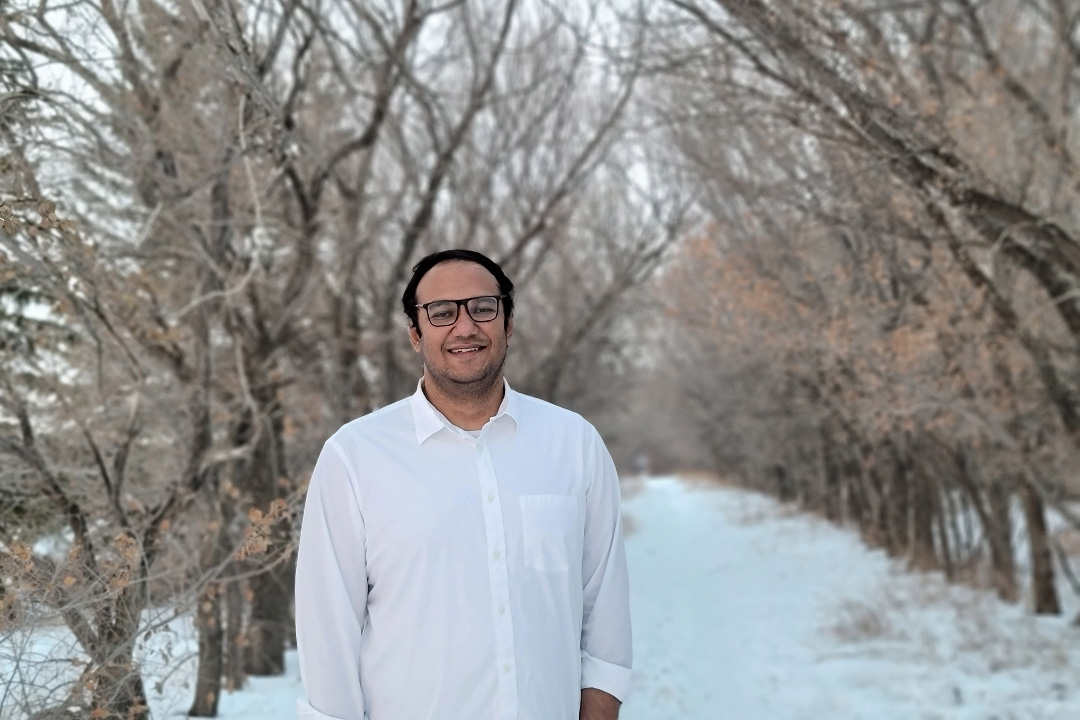
Diving into deep learning: USask research
One of the major global challenges that can be addressed by deep learning computing is food security.
By Brooke KleiboerResearch conducted by University of Saskatchewan (USask) graduate student Sakib Mostafa is taking a closer look at deep learning in computers to better understand how artificial intelligence can be used to solve global problems.
Deep learning is a type of machine learning that allows a computer to grasp patterns from data without any human intervention. The computer program has the ability to observe and change its own operations. A deep learning network mimics the human brain in how it functions and makes decisions, allowing it to perform more advanced actions than other types of machine learning.
One of the major global challenges that can be addressed by deep learning computing is food security.
“Plant phenotyping is leading the studies to help researchers invent ways to overcome this challenge. The use of deep learning in plant phenotyping has opened a new era for researchers. They are developing advanced and accurate systems to improve crop yield and crop management,” said Mostafa.
“However, researchers find it challenging to develop new models without the deep learning model's domain knowledge. Our research can help the plant phenotyping community understand how a model is working and how to create better models.”
Mostafa hopes that his project will help to explain the inner workings of deep learning models so developers and users can better understand them. The project is supervised by Dr. Debajyoti Mondal (PhD), an assistant professor of computer science in the USask College of Arts and Science.
The research analyzes the way deep learning models work by first identifying problems that developers face when building them. Mostafa noted that sometimes the deep learning models perform extremely well for experimental data, but due to the complex data processing operations, fail to perform similarly in real-life situations.
“This motivated us to build methods to examine what various model components are learning, how diverse the information they learn is, and whether there are redundant components that can be removed to improve the model.”
Mostafa’s research team is hoping to establish a platform that allows developers to evaluate the quality of the deep learning model they choose to implement before it causes any issues, and will provide advice on how to improve the functionality of the model.
As deep learning-based models become more involved in automation, monitoring, and decision-making tasks, Mostafa said the research findings may also contribute to the use of these systems in health care, mining, law enforcement, precision agriculture, and other industries.
The research team’s work was presented at the ICCV 2021 workshop, a premier international computer vision event, and won the Best Poster award at the USask Global Institute for Food Security 6th annual Plant Phenotyping and Imaging Research Centre (P2IRC) Symposium. The study was done in collaboration with USask computer science associate professor Dr. Ian Stavness (PhD) and researchers from the University of Winnipeg.
“During my master's degree in biomedical engineering at USask, I realized there is a lack of understanding of how the models work and thus researchers struggle to develop a high performing deep learning model,” said Mostafa.
“Despite the popularity and efficiency of deep learning models, it is still considered a black box; these complex models adjust themselves based on data, and thus, it is often hard to explain what they are learning from the data.”
The research was supported by the Plant Phenotyping and Imaging Research Centre, a digital agriculture research centre located at the USask Global Institute for Food Security and funded by the Canada First Research Excellence Fund.
This article first ran as part of the 2022 Young Innovators series, an initiative of the USask Research Profile and Impact office in partnership with the Saskatoon StarPhoenix.
Article re-posted on .
View original article.

